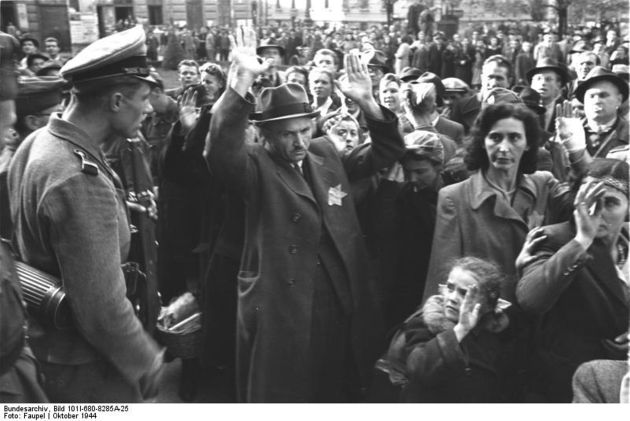In the first days of July, impressed by German defeats and under diplomatic pressure (from President Roosevelt and Pope Pius XII, among others), Regent Horthy was increasingly inclined to halt the deportation of Hungarian Jews. Horthy shared his thoughts with the Chief of the General Staff János Vörös on 5 July, and the next day Prime Minister Sztójay informed Veesenmayer of the Regent’s intentions. The last transport to Auschwitz was sent off on 9 July, after which there was a long break. In the weeks that followed, with varying degrees of success, Horthy tried to loosen Hungary’s ties with Germany and remove officials responsible for organising the deportations. The Regent made a decisive move on 29 August, when he sacked the pro-German Sztójay and replaced him in the post of prime minister by the loyal General Géza Lakatos.
Before reacting, the Germans waited for the situation on the front to stabilise, then on 16 October they instigated a coup d’état carried out by the far-right Arrow Cross Party (Nyilaskeresztes Párt – NYKP). Numerous Wehrmacht units entered Hungary, Horthy was arrested, transported to Germany and interned, while full authority in Hungary was taken over by the Arrow Cross Party leader Ferenc Szálasi.

